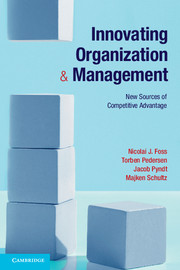Chapter 6 - Chr. Hansen
Collaborative forms under private equity ownership
Published online by Cambridge University Press: 05 June 2012
Summary
“I am completely convinced that the private equity model, if executed correctly, results in better ownership, more efficiently run businesses and increased returns for investors. Committed and active ownership is all about having a very close relationship with management and the appointment of external Board members that act as [a] qualified sounding board, both to management of the portfolio company and to the private equity fund, in order to create clear and achievable strategic and operational plan[s] for the business.”
Lars Terney, partner, Nordic Capital in Denmark (Børsen, January 28, 2008)To be frank, the CEO of Chr. Hansen, Lars Frederiksen, could not understand the general public’s harsh and emotional critique of private equity funds (PEF). Accusations were plentiful: World champions in asset stripping loading their investment objects with exorbitant amounts of debt only to suck out capital for investors! Aggressive cost-cutters ignoring employees and suppliers! Moreover, PEFs were infamous for their aggressive tax planning. Indeed, they were routinely charged with all sorts of iniquities. However, the main reason for the unfavorable light in which PEFs were portrayed in the media was related to the fact that they were a relatively new phenomenon in the Danish business community. Perhaps the fear of the unknown meant that public and media attention tended to be one-sided.
According to Frederiksen, the reality of PEFs was more complex. Each PEF was distinct and pursued different strategies, making it unfair to make naïve generalizations. He felt that the story of Chr. Hansen offered an interesting glimpse into the workings of PEFs. The 2005 delisting of Chr. Hansen’s ingredients activities from the Copenhagen Stock Exchange following the DKK 8.2 billion takeover by the French PEF, PAI Partners, marked the beginning of a self-examination process that was remarkably “healthy” and helped to reshape the company.
- Type
- Chapter
- Information
- Innovating Organization and ManagementNew Sources of Competitive Advantage, pp. 138 - 164Publisher: Cambridge University PressPrint publication year: 2012



